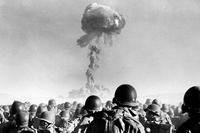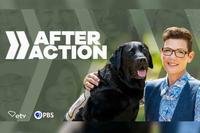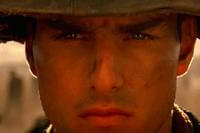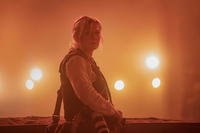
We're going to introduce a friend of ours. He's written about a topic we think is serious in more than one way, because the Korean War was similar in many ways then to Afghanistan now. Not the politics or the nature of the enemy, but the way the public seems is disconnected. If you America's not at war, the military is at war: America's at the mall was applicable to Iraq, you can surely agree how much worse it is with Afghanistan, particularly before the Afghan surge. Anyway, enter Mike Durand. Mike is an infantry combat veteran and good writer and he's Mad Duo approved. Given the nature of this topic we'll forgo our typical grunt commentary...if for no other reason than out of respect for the grunts who didn't walk away from the Chosin Reservoir. God keep you.
"People need to know the Korean War was more than Hawkeye and BJ pulling one over on Frank Burns. I have a personal interest in the topic since my grandfather was an MP there during the war. I guess I tend to get up on my soapbox a little about it." Mike Durand
CHOSIN
Chosin. That's the name of an Independent documentary film about what many people still call The Frozen Chosen without really knowing why. Directed by Brian Iglesias, produced by Brian Iglesias and Anton Sattler, it is raw, blunt and very difficult to watch - which is why it should be watched.
The Korean War is call The Forgotten War. Coming between World War II and the Vietnam War it is the proverbial middle child of 20th Century American wars. Most American are aware of it only because it was on their television sets for thirty minutes once a week as the setting for the sitcom 'M*A*S*H'. The veterans of the war didn't come home to parades or cheering crowds. Nor did they come home to student protest or a nation being torn apart by social upheaval and a later sense of national guilt. They came home, and for the most part, got on with their lives, largely forgotten by the American public and history.
Band of Brothers at the Chosin, Col. Charles Waterhouse. http://www.waterhousemuseum.com/
That, however, is beginning to change. 1995 saw the dedication of the Korean War Memorial in Washington D.C. and 2010 saw the release of the independent film documentary, 'Chosin'. The battle, and subsequent fighting retreat from the Chosin Reservoir, took place from 27 November to 13 December 1950. The United States X Corps, comprised of the 1st Marine Div, U.S. Army 3rd and 7th Div, 41st Royal Marines Commando, and various South Korean forces, fought an estimated 140,000 Chinese over some of the roughest terrain on the Korean peninsula during one of the coldest winters of the war. With temperatures dropping to -35F, frostbite casualties were the norm. Eyes would begin to freeze open, metal cannot be touched with bare skin, and weapons malfunction due to the intense cold. Not to mention the members of the X Corps were outnumbered 10 to 1 and its extraction point, the port town of Hungnam, was 78 miles away . This two week battle became iconic, a de facto emblem of the brutality of the Korean War.
%embed1%
This is the story director Brian Iglesias and writer/producer Anton Sattler, both Marine combat officers with tours in Iraq, sought to tell. A story not through historical reenactment footage and the voice-over work of famous actors, but through unscripted, on-camera interviews of the Marines and Soldiers who were there on the ground, fighting, surviving, and in a few cases making nearly unbelievable escapes from the enemy and the environment. Most of the men are telling their stories for the first time outside of other veterans. It's a privileged, uncensored look into their experiences and in some cases, very private emotions and thoughts.

You can learn more about and purchase the movie on the official website. It's also on Netflix.
%embed2%
MD/R2A






